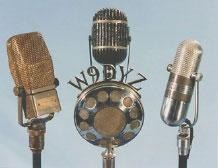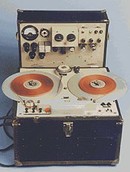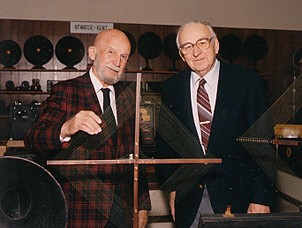Pavek Museum of Broadcasting
Introduction
Text-to-speech Audio
Images
Antique Radio Microphones (Photo courtesy of the Pavek Museum of Broadcasting)

AEG Magnetophon (Photo courtesy of the Pavek Museum of Broadcasting)

Jack Mullin and Joe Pavek (Photo courtesy of the Pavek Museum of Broadcasting)

Backstory and Context
Text-to-speech Audio
While the museum officially opened to the public in 1988, its history begins in 1946 with Joe Pavek, an electronics instructor at the Dunwoody Institute who began amassing his collection with radios he brought home from work. Pavek was an amateur radio operator and entrepreneur who founded Twin City Nut & Bolt Company; his business allowed him the luxury of travel where continued to collect radios.
In the 1980s, Pavek met Earl Bakken, cofounder of Medtronic and inventor of the wearable pacemaker, who shared his passion for radio. Bakken, Pavek, and Paul Hedberg of the Minnesota Broadcasters Association formed the organization that would become the Pavek Museum of Broadcasting. Joe Pavek lived to see his dream of sharing his radio collection and passion with others before his death in 1989.
Sources
Photos courtesy of the Pavek Museum of Broadcasting
